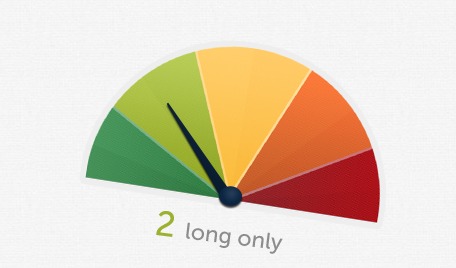 Ken Kam, CEO and founder of Marketocracy and Marketocracy Capital Management, has been an innovator in the investment management industry for over two decades.
Ken Kam, CEO and founder of Marketocracy and Marketocracy Capital Management, has been an innovator in the investment management industry for over two decades.
Ken founded Marketocracy to recruit a large team of portfolio managers with expertise and a passion for investing. Marketocracy’s mission is to find the best investors in the world and then track, analyze and evaluate their trading activity to identify truly exceptional talent. To date, Marketocracy has recruited more than 80,000 managers to manage 65,000 model portfolios that compete to demonstrate exceptional performance through various market cycles.
Before Marketocracy, Ken was the CEO and Co-Founder of Firsthand Funds, as well as portfolio manager of the Technology Value Fund.
Ken is now launching two new Covestor portfolios under the name of Marketocracy: a Core Portfolio and an Explore Portfolio. The first is already live and the second will be taken live soon. We had a chance to ask Ken a few questions about Marketocracy and the strategy of the new Covestor portfolios.
Covestor: Can you give us a little background on Marketocracy and where it stands today?
Ken Kam: I started Marketocracy because I found that I could not tell who has investment skill by simply reading resumes and conducting interviews. I think the best evidence of investment skill is a superior long-term track record. Marketocracy enables those who want to work for us to prove themselves – by managing a model portfolio in real-time – before we let them manage money for clients. I interview the managers whose models beat the broad market by an average of 1000 basis points a year for 5 years to find out what they are doing so I can make an informed decision about when and how to use them to manage client assets. Since we started Marketocracy, we’ve have so far identified about a dozen outstanding managers, and each year we find a few more. Skilled investors are truly rare, and I think this is the best way to find them.
C: How does your experience with Marketocracy express itself in the construction of these two new Covestor models?
K.K.: My experience has taught me two important lessons. One, there is no sector or investment style that works all the time. And two: a great manager gets that way by honing his skill in a single sector or style. The combination of these two lessons is that if you want good performance over time, you can’t get it by using the same managers year after year.
My approach is to look among the managers who have proven themselves over the long term to find those whose style is performing well now. If there are a lot of proven managers who are all performing well now, then I choose managers whose styles are different from one another, to reduce the impact of any single manager’s style falling out of favor.
C: For ‘Core’, the current manager is Eugene Groysman. What can you tell us about Eugene and why you chose him to run this portfolio at the start?
K.K.: Running a core portfolio is difficult because you have to be able to make investments in every sector in order to be as diversified as the broad market. Eugene Groysman uses fundamental analysis to find companies in every sector that appear to offer above average risk/reward profiles. This enables his portfolio to be diversified across sectors while avoiding the worst companies in each sector. Eugene has applied this strategy at Marketocracy since May 9, 2003. After almost 10 years, his model portfolio has averaged 18.1% a year* while the S&P 500 has averaged 7.4%. We started putting client assets into his model in July of 2008. For the Core of a portfolio, you can’t take big risks, but you also can’t settle for average returns, since the Core is usually a large portion of your assets. I think Eugene has succeeded in large part because he is simply avoiding the worst companies in every sector — something index funds don’t even try to do.
C: For ‘Explore’, you state that “[t]he investment model seeks a mix of value, growth, and other strategies that have little holdings overlap.” So you’re looking to combine three different, non-correlated, higher risk strategies into one portfolio?
K.K.: For aggressive investors, the big risk is picking a manager just before his style falls out of favor. That’s why I think it makes sense to select three or four experienced managers who are performing well now, using different investment strategies and styles. Choosing a team of managers like this greatly reduces the chances that all of the managers fall out of favor at the same time. As each manager’s investment style runs its course, assets can be reallocated to the other managers or to a replacement – with the objective to keep the bulk of the portfolio in the hands of proven managers whose styles are performing. .
C: These are relatively complex actively managed portfolios, while the latest trend is toward simple, indexed portfolios. Why do you believe actively managed portfolios should remain an attractive option for investors, despite the difficulty in consistently beating a broad market benchmark?
K.K.: Owning an index fund is like being a passenger on a jet on automatic pilot. Today’s automatic pilots are so good that one might argue that having a human pilot on board is an unnecessary expense. But would you be willing to fly on jet without a human pilot on board? Perhaps if the sky is clear you might consider it. But certainly not if you thought you might be flying into a storm.
I think index funds make sense for those who see clear skies ahead for the stock market. For those who see a storm coming, having a human pilot at the helm makes a lot more sense.
C: Regarding a manager’s style “running its course” and managers whose strategies are “working now” – these seem to be decisions you have to make, actively. What are you looking for when making that determination – and how do you know you’re not leaving a strategy too early/entering a strategy too late?
K.K. Yes, these are decisions I have to make actively. But it is the key to utilizing managers who are skilled in a single sector or style. This is very much like what a baseball team manager has to do, because most players are only skilled at one position on the field.
In the Explore portfolio, I choose the team so we have the strongest areas of the market covered by seasoned managers in their respective sectors or styles. It is my experience that investing in an area of the market (no matter how attractive) for which we don’t have a manager with a proven track record is a mistake. If the market offers strong returns in a part of the market that we don’t have a solid manager, I would rather pass than make an investment with an unproven manager.
To match market opportunities with investment skill, I use the returns of the experienced managers on my bench to tell me when to look deeper at the areas of the market they are investing in to deliver their returns. When I see good performance from a manager coming from the same sector or style in which the manager has a superior track record, that manager is playing to his strengths and warrants further consideration. (If the returns are sourced from a sector or style in which the manager has never performed well before, I would regard the manager as unproven for that sector or style – even if his overall track record is excellent.)
When I see a seasoned manager who is playing to his strengths and delivering good returns, I next have to consider where we are in the lifecycle of an investment opportunity. Good investments start out undervalued because no one recognizes their potential. It is only when other investors see the potential and start buying that an investment opportunity comes to fruition and delivers compelling returns. The problem is that there are lot of investors who will buy a stock without considering its valuation, so strong stocks tend to keep going up even after they go from being undervalued to fairly valued. When the stock starts to be overvalued, value investors start to leave, so the upward momentum of the stock starts to weaken. At some point the over-valuation becomes extreme enough to cause investors to start selling and a stock can come crashing down.
I said earlier that an experienced manager who is delivering good returns by playing to his strengths warrants further consideration. The additional consideration is an assessment by me of where we are in the life cycle of the investment opportunity. I need to feel comfortable that we are still in a stage of the life cycle when we can expect strong results to continue for a while after we put the manager on the team.
In making these decisions, I can indeed be too early to get in or stay too long in any manager. For the Explore portfolio, I choose three or four managers who are investing in different market opportunities each with its own lifecycle. I do this so that when a manager gets to the end of the investment opportunity he is exploiting, he doesn’t affect 100% of the portfolio, thereby giving us time to make an informed decision about when to change the team. By having two or three other managers exploiting different opportunities that are still working, I can still have the bulk of the portfolio generating good returns, so the portfolio can still do well overall even when a one of the manager’s investment style is falling out of favor.
Over time, I think we have to expect that all investment sectors and styles will come into and fall out of favor. This strategy attempts to anticipate this and arranges things so that the bulk of the assets are always in the hands of managers whose investment styles are working.
C: Thanks, Ken, for the insight on your portfolios.
K.K.: My pleasure.
* Hypothetical return that deducts total expenses of 1.95% a year from verified gross returns.




